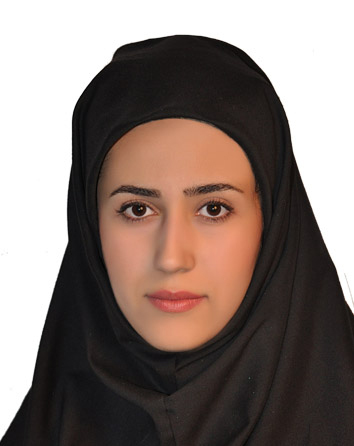Yasaman Niazi
Thesis Title: Multi-objective Planning of Renewable Distributed Generation and Reactive Resources in Distribution Networks
Abstract: With increasing the penetration of distributed generation (DG), especially renewable resources as one of the main requirements of smart grid development, the planning of these resources is of great importance. The aim of DG planning is to determine the location and capacity of these resources in a specified time horizon. It is achieved based on an optimization problem taking into account different techno-economic objectives and constraints. Furthermore, it can be integrated with the planning of reactive power resources (RPRs), which consist of determining the optimal contribution of these resources. The joint planning of DGs and RPRs can improve their benefits for distribution networks as well as for DG owners (DGOs).
In this research, a novel methodology is proposed for the integrated planning of renewable DGs including biomass, solar and wind power, and reactive power resources in the distribution system. The planning problem is solved from the perspectives of both DG owner and distribution network operator (DNO). From the perspective of DNO, some indices such as annual energy losses, voltage stability margin, supply adequacy of microgrids, and the exchanged power with the upstream network are considered as the objective functions. Furthermore, different constraints of the planning problem include active/reactive power balance, limitation of network voltages, the maximum capability of DGs and RPRs, and the maximum penetration of DG units are incorporated. In each case related to a specific index as the objective function, the impact of planning problem on the other indices is evaluated. Also, based on the economic parameters, two problems of DG planning are defined with the aim of maximizing the profit from the installation of DGs for the DGOs and DNO. The objectives of the distribution company and the DG owners will not necessarily coincide and a trade-off may be required. Therefore, the planning problem is converted into a multi-objective optimization problem. To solve the multi-objective optimization problem, the epsilon-constraint method is used and the Pareto optimal solutions are attained. Hence, a further degree-of-freedom is provided for the decision maker to select the final solution. The performance of the proposed planning framework is evaluated using detailed simulations on 69 bus PG&E distribution system. The simulations are performed by GAMS software. The simulation results showed that the proposed integrated planning of DGs and RPRs improves different technical indices of the distribution system. In addition, in many cases optimizing an objective function improves the other indices to a great extent. Furthermore, the economic benefits of both DNO and DGOs are increased with the proposed method.
Key Words: Planning of distributed generation, Renewable distributed generation, Economic analysis, Multi-objective decision making
عنوان پایان نامه: برنامهریزی چندهدفه منابع پراکنده تجدیدپذیر و منابع توان راکتیو در شبکههای توزیع
چکیده
با توجه به ضرورت افزایش ضریب نفوذ منابع تولید پراکنده بهخصوص منابع تجدیدپذیر به عنوان رکن توسعه شبکه هوشمند، تعیین محل و ظرفیت درست این منابع از اهمیت شایانی برخوردار است. هدف از برنامهریزی منابع تولید پراکنده و منابع توان راکتیو تعیین بهترین اندازه و مکان نصب آنها بهمنظور دستیابی به شاخصهای فنی و اقتصادی مطلوب در شبکه توزیع با در نظر گرفتن قیود ظرفیت تولیدات پراکنده و قیود بهرهبرداری شبکه است. اتصال منابع تولید پراکنده، عملکرد شبکه توزیع را بهشدت تحت تأثیر قرار میدهد. استفاده حداکثری از منافع فراوان نصب منابع تولید پراکنده در شبکههای توزیع، در گرو برنامهریزی درست نصب این منابع در شبکه است.
در این تحقیق به برنامهریزی منابع تولید پراکنده تجدیدپذیر شامل منابع بایومس، بادی و خورشیدی و منابع توان راکتیو در سیستم توزیع پرداخته میشود. مساله برنامهریزی هم از منظر بهرهبردار شرکت توزیع و هم از منظر مالکین منابع پراکنده مورد بررسی قرار میگیرد. در این راستا از منظر شرکت توزیع بهبود شاخصهایی همچون تلفات انرژی سالیانه، حاشیه پایداری ولتاژ، کفایت تولید ریزشبکههای طراحی شده و توان مبادلهشده با شبکه بالادست در نظر گرفته میشود. محدودیتهای مساله برنامهریزی شامل معادلات پخش توان، محدودیت ولتاژ باسها، حداکثر ظرفیت منابع پراکنده در هر باس و ضریب نفوذ منابع پراکنده در کل سیستم هستند. بهعلاوه تاثیر برنامهریزی با یک تابع هدف روی مقادیر سایر شاخصها بررسی میشود. همچنین با تکیه بر پارامترها و مولفههای اقتصادی، دو مساله برنامهریزی منابع تولید پراکنده با هدف حداکثرسازی سود حاصل از نصب منابع تولید پراکنده برای صاحبان آنها و شرکت توزیع تعریف میشود. نوع تعریف مساله و پارامترهای استفاده شده بهگونهای است که افزایش ظرفیت نصب، منافع اقتصادی شرکت توزیع و صاحبان منابع را به صورت توام تأمین میکند. اهداف شرکت توزیع و صاحبان منابع لزوماً همسو نخواهند بود و باید مصالحهای بین آنها انجام شود. در این حالت مساله برنامهریزی به یک مساله بهینهسازی با دو تابع هدف تبدیل میشود که با تشکیل جبهه پارتو و استفاده از معیارهای تصمیمگیری پاسخ مناسبی برای حل مساله انتخاب میشود. برای حل مساله بهینهسازی چندهدفه از روش محدودیت اپسیلون استفاده میشود. مساله برنامهریزی برای شبکه توزیع 69 باس PG&E توسط نرمافزار ریاضیGAMS انجام شده است. در این تحقیق، برنامهریزی صحیح منابع تولید پراکنده و منابع توان راکتیو منجر به بهبود تمامی توابع هدف بیانشده شد. به جز در موارد خاص، در صورتی که شرکت توزیع یک تابع هدف را برای برنامهریزی در نظر بگیرد، مقدار بقیه شاخصها نسبت به حالت پایه بهبود مییابند.
کلمات کلیدی: برنامهریزی منابع تولید پراکنده، منابع پراکنده تجدیدپذیر، تحلیل اقتصادی، تصمیمگیری چندهدفه

